What happens when you take a brand new Instagram account, decide on a rapid growth strategy for it, and look at the results?
That’s what I’m going to be covering in this case study. I’ve covered a lot on this case study (because I personally learned a lot along the way and want to share that with you). So I will warn you now that as a blog post it’s pretty long, so make sure you set aside some time to read through this (i.e. grab a coffee first) as I’ve tried to include as many actionable tips as I can. Alternatively, if you scroll to the bottom, I’ve included a downloadable PDF + action plan, that you can email to yourself to read later.
Ready? OK, we shall begin.
Please note this post may contain affiliate links. Please refer to my disclosure for more information.
In This Case Study You Will Learn
- How I grew a brand new Instagram account to 3000 followers in a matter of weeks, despite having little prior experience
- The one key lesson you need to understand if you’re going to actually achieve a loyal following, not just raw “impressive-looking” numbers
- How I quickly made money from the new account, using a very simple sales funnel that anyone could copy
- The three things I would have done differently, and how you can apply this to your own Instagram account
Important Author Note Before We Begin
| This case study is primarily aimed at entrepreneurs who haven’t yet launched their Instagram account, or still have a tiny account that they are looking to grow (i.e. under 500). If you are looking for rapid growth or already have a decent sized account, as an added bonus I’ve teamed up with the amazing people at BossBabes to give you access to this fantastic free training from Natalie Ellis on how to start monetizing your Instagram account – I’m assuming you’ve heard of these guys. They are definitely some of the most high profile industry leaders, so enjoy! Free webinar from Natalie Ellis at BossBabes – 4 reasons you’re not making money on Instagram (and how to fix it) |
Background
Before I reveal the results of my Instagram experiment, I first want to put it into context and give you a bit of background into why I did it.
Let me rewind to 2015 when I was heavily pregnant with my 2nd child. I was still doing consultancy work at the time but as my due date loomed ever nearer I was struggling to commit to new work. Nevertheless, I knew I wanted to keep working part time whilst I had a newborn at home. I just wanted to do something that required a little less commitment. So after giving it a bit of thought I decided to look into affiliate marketing. That meant I could focus entirely on driving traffic to someone else’s offer and pass the customer service responsibility on to someone else.
If nothing else, it was going to be useful experience.
Since this entire case study is about Instagram, you win no prizes for guessing the platform I chose to drive traffic from. But what was interesting in this instance was that I had absolutely no experience in Instagram. I hadn’t even used it from a personal standpoint. And on first glance, it didn’t look a great platform for marketing (unless you happen to be a celebrity).
Nevertheless, I like making decisions based on concrete data and clear facts. And Instagram was working well for other marketers. And check this out for an interesting bit of data:
Instagram has 58 times more engagement than Facebook and 120 times more engagement than Twitter (source: Sprout Social).
Instagram has 58 times more engagement than Facebook and 120 times more engagement than TwitterClick To TweetThat’s quite a statistic, right? And if you’ve been on Instagram, you’ll know this for yourself. Even a new account can get comments and likes on a post – something which is almost unheard of with new Facebook pages (unless you pay).
Goal
With the evidence pointing towards the sheer potential of Instagram, I decided to set myself a goal. I would choose an offer to promote as an affiliate, grow a brand new Instagram account for it, get as may followers to that account as I could in a short space of time, and drive traffic to my offer. And most importantly, I wanted to dedicate less than 30 minutes a day to it, which, as a busy full time mum with a baby and toddler, was all the time I could realistically afford (to be honest, even 30 minute was a struggle. I can see all you mums and dads now nodding your head in agreement).
My Results
Now, I’m going to reveal as much as I can in this case study, but I’m not going to reveal the offer I promoted. And that’s because I don’t promote it anymore, and don’t want to, and without explaining much more than that, I have enough integrity to not recommend something to my readers that I don’t think is worthwhile. But as far as showing you this case study goes, the offer itself doesn’t matter because you’re going to get the exact steps I took, that you can copy if you want to grow your own Instagram account and promote your own business.
So here’s a summary of my results from this Instagram account:
- I grew the account over 6 weeks
- In that 6 weeks, it grew to 3200 followers
- I posted 70 times on the account
- I got 135 new subscribers across those 6 weeks
- Those 135 subscribers translated into $502 in earnings over those 6 weeks


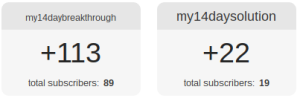
I’m not going to make a song and dance about those figures because I don’t think they’re great. But neither are they terrible, especially for a first attempt at Instagram. And keep in mind, at the time I was looking after a 3 year old and a young baby (neither of whom seem to sleep – ever!) – full time – so I spent very little time on a daily basis trying to grow this account. If you have a normal working week to dedicate, and you want to use this model to grow your business, well then I think the sky’s the limit for you. I think you’ll get much better results than me.
How I Grew The Instagram Account – Step By Step
I’m going to share my exact steps in this blog post, so you can use this as a model for growing your own account.
However, as I alluded to above, in retrospect I think my results could have been a lot better than they were. It was a huge learning experience, so I’m also going to finish the post by explaining a few things I would improve next time to get better results.
[convertkit_content tag=”607268″][/convertkit_content]
The Strategy I Followed To Organically Grow Instagram Followers For Free
The Instagram growth strategy I followed was very simple.
- I defined who my target audience was. Who would be most like to convert and buy my offer?
- I constructed a profile that would fit my target audience and encourage them to convert
- I created and scheduled posts that would provide huge value to my target audience
- Next, I identified key target accounts. These are accounts my target audience already follow.
- Once I had identified these key target accounts, I would follow the followers on these target accounts and hope they followed me back.
- Finally, I would encourage people to sign up to my list
- Once they were on my list, I would use a simple email sequence to promote my offer
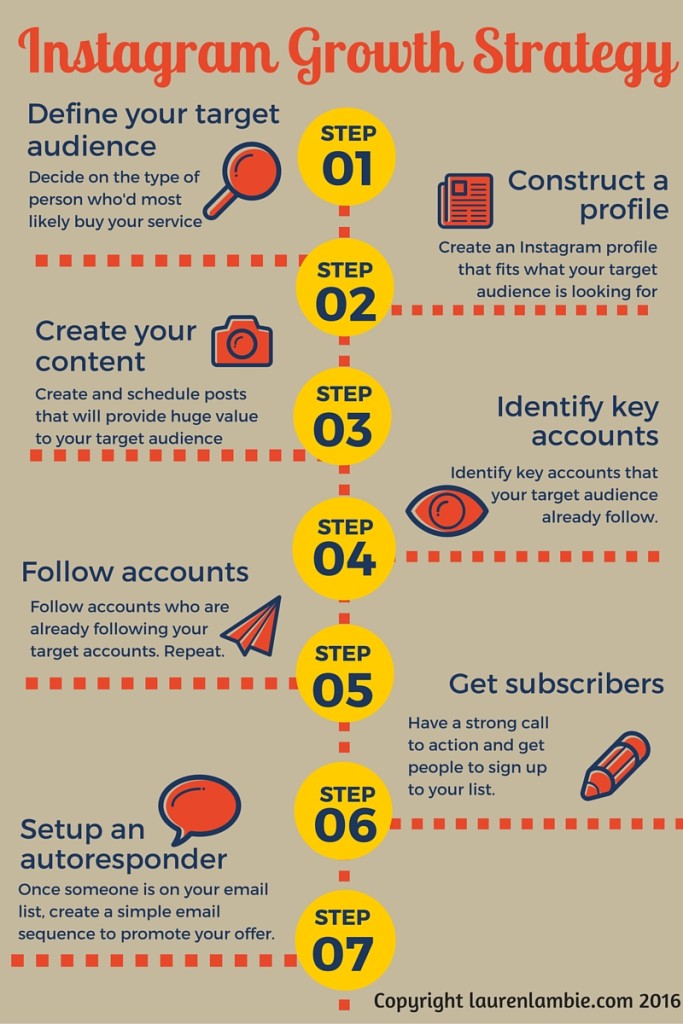
Setting the account up
I’ve written a separate post on best practice when creating a new Instagram account so I won’t repeat it here. You can read the article by clicking on this link, but I’d suggest you wait until you’ve finished this case study before checking it out, so I’ll link to it again at the bottom of the post.
I’ve included a screenshot below of what my account looked like and annotated it:
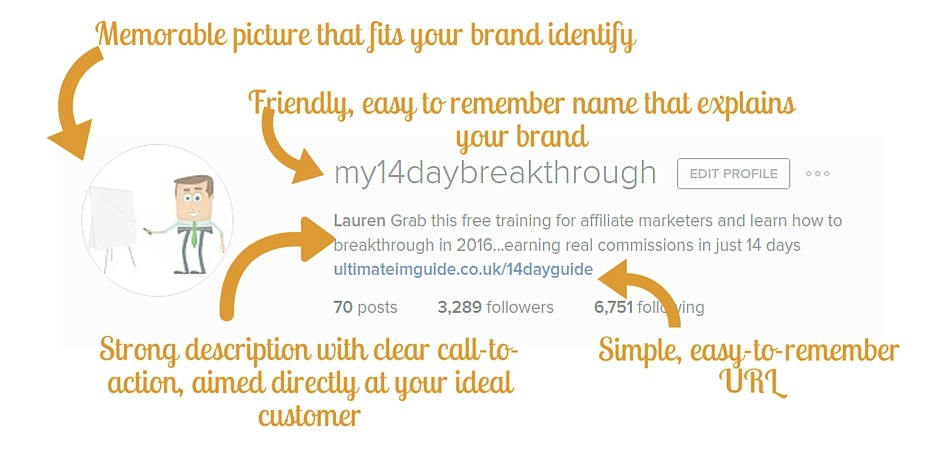
The link you use is super-important, because it’s the only place on Instagram you are going to get to post a link. So if you want people to visit your website you need to make sure it’s near-enough perfect (i.e. short, memorable and looks “safe” i.e. not spammy). If you really want a memorable easy-to-understand link, I’d highly recommend you use a link manager like this one (which is the tool I use) to create a dedicated URL just for your Instagram profile. I’ve written a separate quick guide here on why I track links on Instagram.
Identifying my target customer
Customer targeting is so important, whatever business you are in. Many businesses, particularly startups, don’t spend enough time on this or really drill down to who their target customer is. But if you want a successful Instagram strategy, you need to have this down to a fine art.
Identifying your target customer is about having a crystal clear idea of the type of person who is most likely to buy your product, and a very in-depth understanding of what their biggest motivators are when making that purchasing decision. A good starting point is to ask yourself this question:
What’s my target customer’s biggest pain point?
You can extrapolate a lot about your target customer just by answering this question. For example, let’s say you are a dieting guru, and your customer’s biggest pain point is not having the time or energy to shift their pregnancy weight after having a baby. That’s very specific, and when you are that specific, it’s going to really help you succeed on Instagram, because now you’re not targeting every single person on a diet, you’re targeting a very particular type of dieter. These are going to be female, new mums, time-poor, sleep-deprived, wanting to find a solution that will help them incorporate healthy eating and exercise into a very stressful and busy time in their life.
Going Deeper Into Your Customer’s psychology
Now you can start getting much deeper into your target customer’s psychology. Why do they want to lose the weight? How do they feel about carrying this extra weight (they may be at their heaviest weight ever and that might have a profound effect on the way they see themselves)? Ask yourself how could you help them find time in their busy daily routine. How can you help convince them to spend time looking after their body when they might have only had 4 hours a sleep the night before, and an equally demanding day ahead of them?
This is exactly what I did for my account. The affiliate product I was promoting was a marketing/make money online course, and it was designed for beginner marketers. So I used that information to think about what type of person was most likely to join the course. Who were they? Why did they want to earn money online? Had they recently quit a job? Did they hate their day job? Why were their struggling online? Were they disillusioned with the whole “make money online” promises from gurus? What did they currently find most frustrating in their attempts to make money? What scared them – failure, losing money, feeling like they haven’t got the right skill set?
I built up a very detailed profile of the type of person I wanted to target. And that’s important, because although there may be a whole range of people who could sign up to that type of offer, I wasn’t necessarily interested in them; I just focused my efforts on my target customer.
By now you might be thinking: just what is the point of these questions, Lauren? How’s that information going to help me create a good Instagram account?
It’s going to help because the more questions you ask yourself, the more you’re going to be able to create a really clear profile of who your customer is: where they live, what they buy, what celebrities they admire, what blogs they read, what their interests are. The more you know about your customer, the more you know about what they are looking for on Instagram.
You might have guessed where we going with this, but if not let me give you a clue. Because in the next section I’m going to talk about how we use this customer information to begin creating an account that your target customer is going to love (note: not “like”, not “want to follow”. That’s boring. You want your target customer to be completely wowed by your Instagram account and fall in love with it).
Creating content
Content is one of the areas where I felt I could have done better. Mine was quite uniform. Here’s a screenshot:
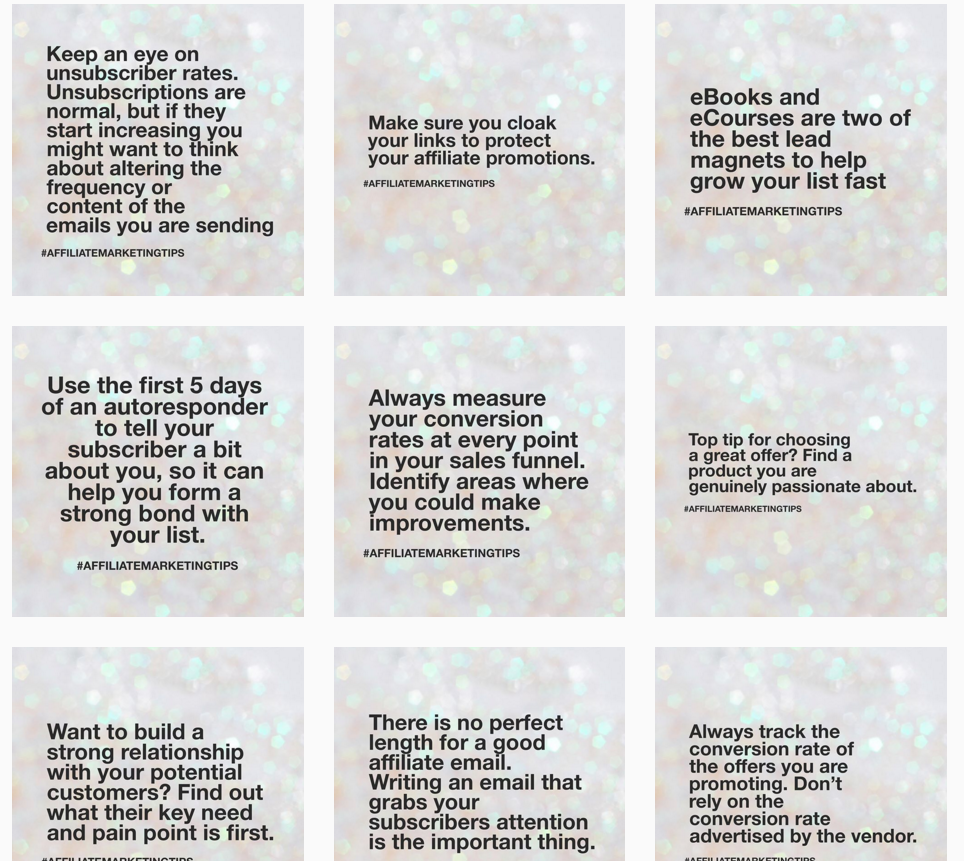
On the plus side it contained lots of helpful information to my target customer (people who were beginner affiliate marketers, but lacked strategy and knowledge) so it ticked the boxes in terms of “providing lots of value”.
This is the one big key lesson I want you to take away from this case study. If you are just using Instagram to gain thousands of followers, then Instagram isn’t the right tool for you. You must be in the business of creating loyal followers, and that means consistently providing value to your audience.
Before I started creating an Instagram account, I did a lot of research into other accounts to see what was working and what wasn’t, and there was one common pattern that stood out with successful accounts: they all had a consistent theme.
Here’s some screenshots of some accounts I think have a strong, consistent theme.
@BeABloggerBoss – Consistent branding. Offers a huge amount of value to followers
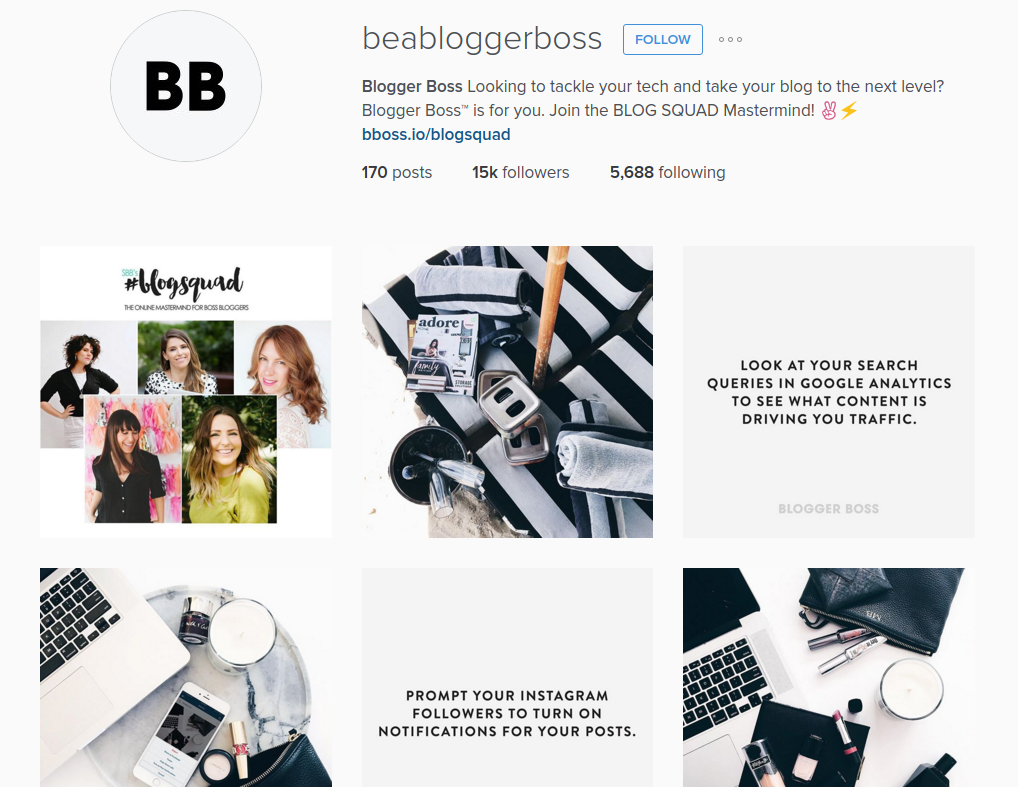
@DeliciouslyElla – Not overly promotional. Personable. High quality images.
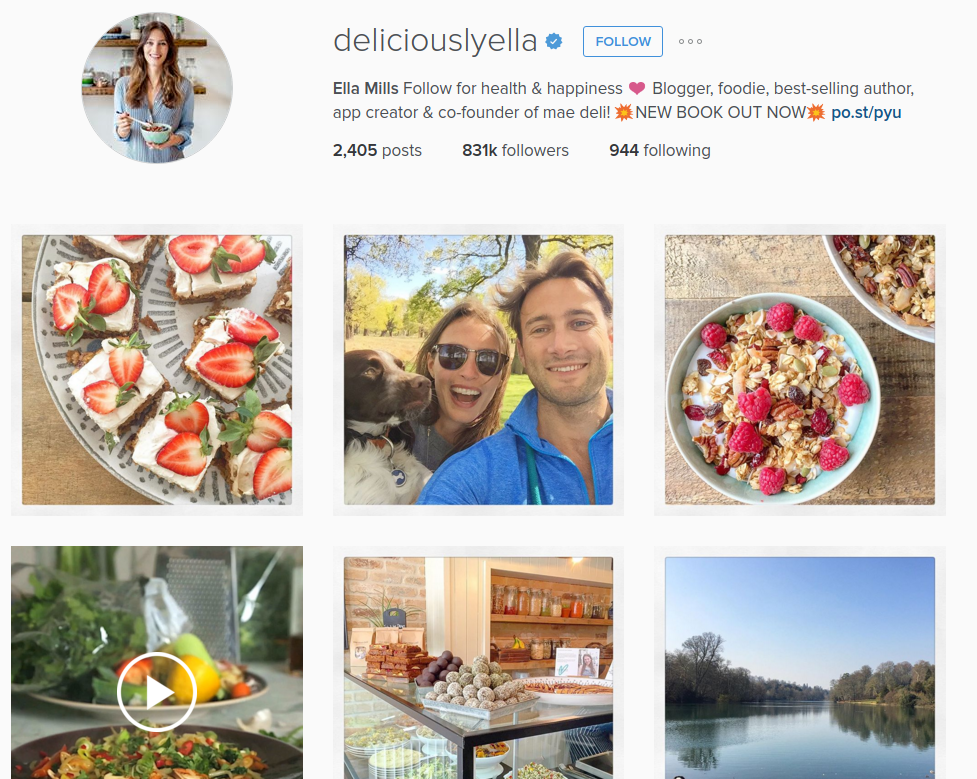
Choosing A Theme
The reason themes work so well on Instagram is that it creates the impression of a strong, professional brand with a clear message. That word – message – is really important when you are designing an Instagram account. Remember, the whole purpose of Instagram is to communicate to your potential customers that you have a service that can help them. That message needs to come across regularly and consistently.
My chosen theme was to give out marketing tips aimed specifically at affiliate marketers – I thought this would be something that was high value to my audience. I did get a really good response to these. Here are some of the comments I received:

The reason I felt I could have done better at this was my account was a bit too repetitive. I felt that I could have shaken things – without diluting my brand – my adding in some colorful or beautiful images, or even some personal behind-the-scenes images that showed my human side (if you want to know more about the types of content that work well on Instagram, I’ve written this short guide).
Here’s an example of one of my favorite accounts from Marie Forleo. I’ve just annotated against it so you can see the different types of content Marie is posting, but if you have a look at the page as a whole it still gives the impression of a strong, consistent brand. That’s the sort of mix of posting I’m going to be aiming for with my next account (no dogs, though. I’m not much of a dog person. Perhaps my kids but we’ll see).
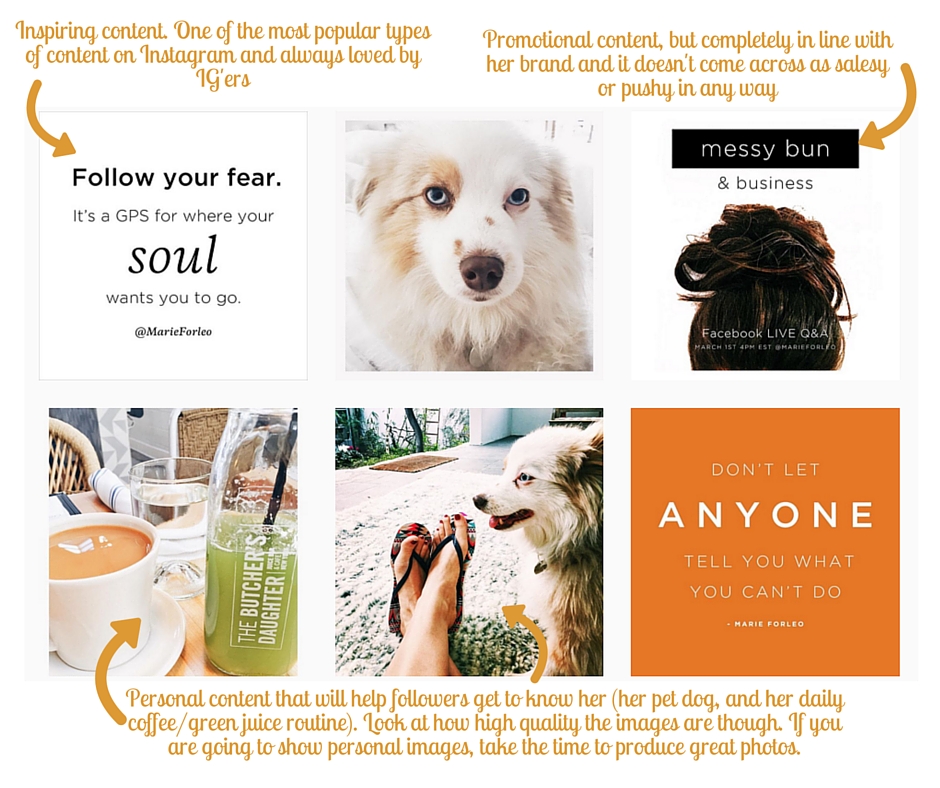
Posting schedule
My posting schedule was quite erratic, mainly due to the fact that some days I would have plenty of time to create and post content, and other days I wouldn’t (hint: two young kids).
What I have learned from this is that posting content can be time consuming. You are doing it from your phone, which means you need to have the content there and ready on your phone to post. To save time, I used an app called wordswag which was absolutely brilliant, because it allowed me to overlay words in lots of really cool designs on top of images. Here’s an example of some of the content you can quickly create on wordswag.
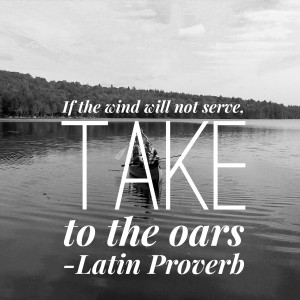
I’m not an affiliate of wordswag by the way. I just really love it. I love creating beautiful looking images for Instagram (which is something Wordswag does so well) and I guess my desire to have aesthetically-pleasing content is one of the reasons why Instagram is (now) my favorite social media platform.
What could I have done differently? Lots. For a start, I could have created all my content in advance and then used a 3rd party platform to schedule the content. I’m not sure why I didn’t do this, because it’s something I’ve done for years with Twitter and Facebook. But it’s definitely something I’d do in the future. After lots of research, I’ve found these tools:
- Tailwind (this is the one I currently use as of 2020)
- Schedugram
- Latergram
So I’d definitely recommend creating at least 50 posts in advance. Not only is this going to save you time later, it’s also going to help you stay consistent with your posting. And posting content consistently is one of the biggest ways to increase your following. Every time I posted a new piece of content, at a guess (I didn’t monitor it closely) I would say I got about a dozen new followers very quickly (I’d also get new subscribers). If you are posting 5 times a day, that adds up fast.
The other advantage of posting 5 times a day is that it’s going to be seen by a bigger percentage of your audience (who’ll be logging in a different times, especially if they are in different time zones), which is going to help strengthen your brand and convert people into subscribers or customers (note: Instagram have recently changed their algorithm about how your posts are seen by your followers. I’ve written a short guide about the new Algorithm here and what is means for your business).
Getting followers
Author note: Since this post was written, Instagram has changed – a lot. So I don’t recommend this follower method anymore. Nevertheless, I’ve kept this post in here as the rest of the article is still relevant.
Now we’re going to move into the nuts and bolts of the case study, because my ability to grow my following as quickly as I did wasn’t accidental. I used a very precise strategy, which for the purpose of this case study I’m going to call my “follow strategy” (catchy!). I owe this strategy to an article I read a while back by http://austenallred.com/. He’s since removed the post but I still want to credit him for it because it helped form my own strategy.
To put it simply, the follow strategy is about following accounts of people who are likely to be interested in your service. When you do this, you’ll find a certain percentage of these people will naturally follow you back.
Is this spamming?
No, this isn’t spamming. I don’t use bots or anything else that violate Instagram’s terms and conditions, nor do I use what I’d refer to as a “scattergun” approach, whereby you just randomly follow people whether or not they have any interest in your product. Also, I don’t follow the same account more than once. I have never wanted to create an Instagram account that’s going to annoy people (and that goes for any social media platform I’m using). This strategy is really about giving potential followers a gentle nudge by following them so they can see that you exist and you have something of value to offer them.
So my follow strategy is far more considered and targeted. I don’t follow thousands of accounts at once. I follow 59, to be precise. And those 59 accounts are very carefully chosen, as I’ll explain now.
How I target accounts to follow
Earlier in the case study, I told you that I spent a lot of time getting to understand my potential customer. This wasn’t just to go through the marketing motions, but by getting an in-depth understanding of my customers I can also form a picture of what their current activity is on Instagram.
So based on my target customer (people wanting to start making money online or people struggling to make money online) I started to put together a profile of what their Instagram account might look like. I asked myself questions such as:
- What types of interests are they likely to have?
- What other accounts are they likely to follow?
It’s quite easy to research this. If you start thinking about the types of accounts they follow, you can start looking at those accounts in depths. For example, a good Instagram account in the make money online niche would be Pat Flynn, who has a following on Instagram of around 19,000 (at the time of writing). So I could look at Pat’s posts, and focus on those posts where he talks about making an online income. I’d then look at who commented on those posts and take a look at their profile, because they are likely to be my target audience. I could look at what types of comments they make and I could also check out the other accounts they are following.
This is pretty much what I did, and during that research I made a list of about 100 other instagram accounts (like Pat’s) that my target audience were likely to already follow. These are accounts with a big following.
How To Research Accounts
I’d also think laterally when doing this research, so although an account like Pat’s is fairly obvious, I’d also think about less obvious types of accounts that my target audience may be following. For example, if they are struggling to make money online, they may have recently left a job and they may also be job hunting. So job hunting accounts could be a useful place to look. They may also be looking at certain tools that many entrepreneurs use when starting an online business, such as WordPress or Shopify.
The more you can act like a detective, and carry out some intelligent research into your audience, the more successful you are going to be at finding your target customer.
I think I was pretty successful at this, because if you look at my account profile, you can see that my number of followers are roughly half the number of accounts I followed. Some of these will be natural followers who just found my account and followed it, but a large percentage will be people who followed me because I followed them first. That means that my targeting must have been pretty accurate.
Here’s the exact steps you need to take to copy my method
- Find an account to target. For example, if you are in the make money online niche, you could target Pat Flynn. If you can’t think of an account, start with a hashtag keyword instead e.g. #onlinemarketing and start from there.
- Click on Pat’s profile, and click on his list of followers
- Go down this list and click follow against the most recent 59 accounts
- Even better, if you have time click on each follower, read their profile and find out if they fit your target audience. If they do, “like” their two most recent posts and follow them
- Only follow a maximum of 59 accounts an hour. This is extremely important. Any more than this, and Instagram will think you are a bot and will ban you.
- Repeat this activity throughout the day at regular intervals. Remember, never follow more than 59 an hour (or one a minute).
- Don’t “unfollow” people who don’t follow you back. You can clean your account later when you have a larger following, but I wouldn’t worry about it for now. It’s not important. Besides, following and then unfollowing an account is incredibly annoying for those users. And like I’ve said already in this case study, you want to grow a loyal audience, not annoy people.
Using a good tool will always make your life easier in business
You might think the follow strategy I’ve just outlined is a bit cumbersome. I guess it can be. But there is a much better approach to take, and that’s to use a tool. In this case, I’m going to recommend Crowdfire.
Crowdfire lets you follow people using this exact method. It’s manual, but the plus point about using it is that when you click on a target account (for example, Pat Flynn) it’s going to list the most active, engaged users who are following his Instagram profile. That’s a big deal, because the more active a user is on Pat’s account, the more likely it is that they are your target customer. Plus, the beauty of something like Crowdfire is that you can do it on your desktop, and it literally takes 30 seconds to follow 59 accounts (they also have an app and that’s just as fast).
Crowdfire also lets you have multiple accounts and that’s pretty good if – like me – you create more than one account to target different types of customers (something I’ll talk more about in a future post).
I personally think it’s one of the most useful platforms you can use for Instagram, and I’m all for using tools as they help me work smarter, not harder.
Hashtags are your friends when it comes to growing your account
When I suggest to people they use hashtags on Instagram, they are skeptical as to how much it can help grow their list of followers. Don’t be, because I promise you: it works. In fact, use the right hashtags and it’s going to be an extremely effective way of growing your account quickly. I’ve lost count of the number of times I’ve had a comment on a post along the lines of “hey, I just found you using this hashtag”.
Hashtags allow people to find your content. But what you don’t want to do is just litter your account with hundreds of irrelevant hashtags (besides, that would be boring). I see a lot of advice from so-called Instagram gurus saying stuff like: use these 10 hashtags because they are the most popular. Why? How is that going to help attract your target customer? Answer: it isn’t. Instead, find popular but very specific hashtags related to your business. That’s super-easy to do. There are two ways. First, you just search hashtags by keyword within the Instagram app, and next to it will be a number indicating the number of posts that hashtag has. Clearly, posts with a large number are likely to be more popular. Here’s a screenshot of what I mean:
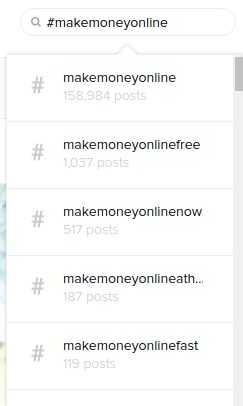
Alternatively, you could just look at the comments against popular posts in your niche and look at the hashtags other people are using.
| Quick Tip (updated for 2020): There are now new tools on the market that will tell you the most popular hashtags for your niche, and this can make a big difference to the reach of your post (this is the tool I use to discover the best hashtags). |
Here is a little trick to using hashtags really effectively, whilst still keeping your account looking nice and professional. Don’t post them immediately in the description when you add a new post. Instead, once you’ve posted something, create a new comment underneath and put the hashtags there. Here’s a screenshot of what I mean:
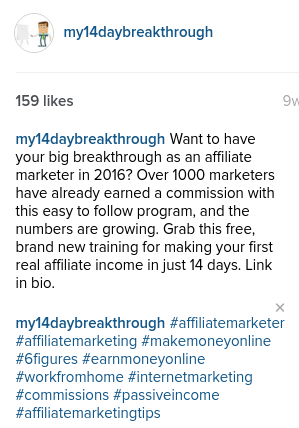
Getting subscribers
Now we come to the most important step in this entire case study. You could stop right now and follow every step in this case study so far and I’m confident you’d be able to create a new Instagram account with a large following.
But what are you going to do with that account?
You always need to be thinking about the end goal for your business. Perhaps you think you want to use Instagram just to build a brand or a relationship with your audience. Although that may be true to an extent and is a great idea, you also want to be able to convert your followers into subscribers, and from subscribers into customers. That’s what I (unoriginally) refer to as an Instagram Lead Funnel, and that’s my favorite topic of all.
So in the final step in this case study I’m going to explain how I turned into my 3000+ followers into 135 subscribers, and $502 in sales.
Here’s a quick diagram to show you how a basic zero-cost lead funnel works. This is the one I used for my account in this instance. You can also choose far more high performing ad-based lead funnels which are going to get you great results, but that’s a topic for another post.
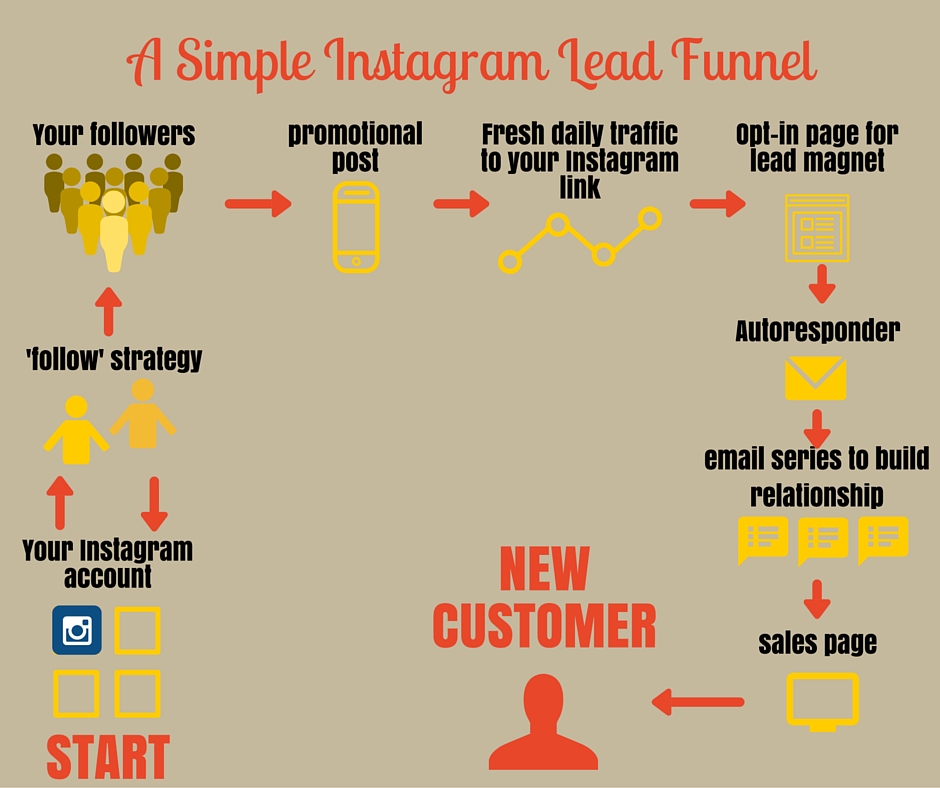
It’s pretty simple. When you gain followers on Instagram, you drive them to a custom opt-in page that’s specific to Instagram (that’s important – I’ll talk about that in a minute). Like any good opt-in page, this should have a lead magnet, or bribe if you will, to encourage your visitors to opt-in. Once they are opted in, they enter an autoresponder sequence, which delivers value, delight and surprise, and eventually leads to a pitch for a sale.
Easy right? Let’s break that down a little:
The link
This step is optional but very worthwhile if you want to optimise your lead funnel. You want a dedicated link on your Instagram profile. Don’t simply link to the homepage of your website (it’s a waste of a click). Nor should you link to a rewritten URL using something like bit.ly (customers will either forget it, or if it’s a little obscure they will be nervous that it’s not a safe link). Ideally, you want a custom link which really clearly sets out where you are taking that user to. Because remember, people don’t like leaving an app they’re on. People don’t like leaving Facebook, Twitter or Instagram when they are busy browsing it. So your link has to sound really tempting. So, for example, if you are promoting a lead magnet on how to pitch to high-value clients, you could have a URL something like this: thehighvaluepitch.com/getitnow
How you do this is pretty simple. Decide on a good name for your opt-in, and buy a cheap domain on somewhere like Namecheap. Then, you just need to use a service such as Clickmagick to set up a redirect your opt-in page using that custom URL (clickmagick has a useful how-to guide here). Here’s a screenshot of what this look like:
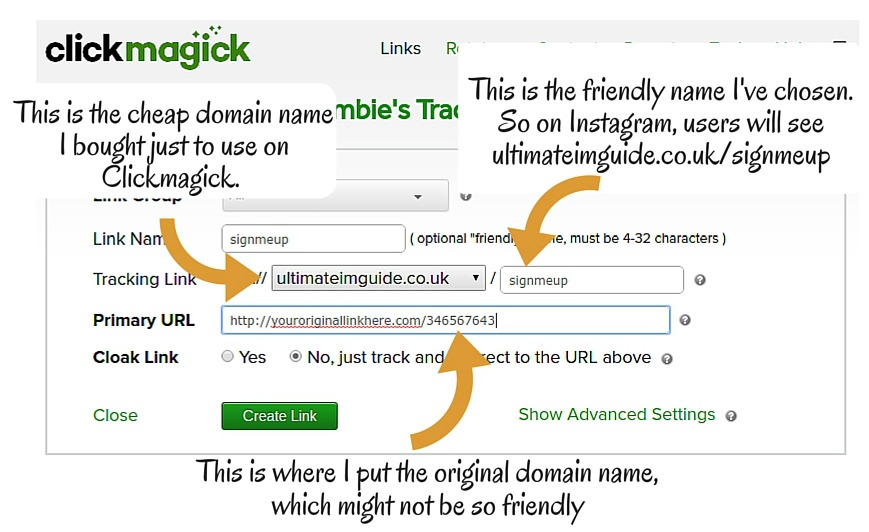
You might think this is a lot of work just to provide a pretty-looking URL and you’d be right. But the reason I’ve included this step is actually more important than that. The whole purpose of using a service like Clickmagick is that you are going to get a lot of data that’s going to help optimise your campaign. We’ll come onto that in a bit, but first let me just talk you through some of the other steps you need to take to set your Instagram lead funnel up.
The lead magnet / bribe
A good lead magnet on Instagram is something short and sweet. People won’t spend a huge amount of time on Instagram making a decision about whether your offer is something of value to them; they are scanning rapidly. So you need a lead magnet that’s going to grab their attention. This might include:
- Cheat sheet
- Checklist
- List of resources
- Webinar
- 10 point guide
Think about what your audience most desire. What is the one thing you could give them right now that would make their life easier?
For my profile and for the purpose of explaining what I did in this case study, I created a lead magnet that lead directly to free video training (which was part of the affiliate offer I was promoting). So it was a bit unusual in that respect as I didn’t create it myself. But when I have created and tested lead magnets, the ones that perform best for me are always fairly short and have one single clear benefit to the user (I think one benefit works better than many. That may sound counter-intuitive but from my own experience a lead magnet offering one thing works better).
I personally love using Canva.com to create smart-looking lead magnets, which will allow you to create a piece of content and turn it into a PDF. It’s free and it has plenty of graphics you can use to make your lead magnet look professional.
The opt-in page
There’s one really important rule to remember when creating your opt-in page for Instagram.
It MUST be mobile friendly!
I’d highly recommend using a landing page creator for this step. It will save you so much time in the long run. The templates many of them offer have already been tested and optimized. So you know immediately that you are going to have something that converts well. By landing page creator, I mean software such as:
- Clickfunnels (the one I use, and I love it. It literally takes me 5 minutes to put together an opt-in page. And I have published several that have converted at around 65%).
- Unbounce (similar functionality but with a lower monthly cost than Clickfunnels – sometimes this link also offers a 20% discount for the first 3 months – if they have that promotion going it’s worth grabbing!)
- Leadpages. I used to use Leadpages until I switched to Clickfunnels. Leadpages is better if you are an absolute beginner, as it’s really easy to create a page and you need zero technical skills. I switched to clickfunnels because I wanted something with a bit more flexibility, but if you want something super simple, Leadpages is a great choice choice.
- Optimizepress is also highly recommended by marketers.
- There are many more, but those are the most well known. Always do your research before buying.
I kept my page really simple. Just a headline, text and background image. It’s not live any more, but I’ll include a screenshot of a similar landing page so you can get an idea of what it looked like:

Essentially, the landing pages that work well for me have:
- A professional design. I love adding a colorful background so that the image stands out.
- A big headline with a really simple format: how to (main benefit e.g. make money using instagram) and (additional secondary benefit e.g. you don’t need any prior experience)
- Some bullet points which tease the reader about what’s in the lead magnet, and makes it sound irresistible
- A friendly call-to-action. I never use the phrase “download” or “subscribe”. Too boring. I prefer something like “yes, sign me up!” or “yes, send it to me now”.
The autoresponder sequence
I don’t want to spend too long talking about the autoresponder series, because the purpose of this post is really about getting leads onto your subscriber list. But it’s still important. Because even if you are really successful at building a list via Instagram, if you send your subscribers lousy emails I doubt they are going to buy anything from you.
I’m not going to reinvent the wheel when it comes to what you should write to your subscribers. I’m just going to tell you two things that worked for me:
Thing number 1: Get your emails written in advance as an autoresponder series. Aweber, Mailchimp and Getresponse (as well as others) all give you this ability. What a series of emails will do is help you form a bond with your audience. They subscriber, get their freebie, and get emails from you with plenty of value it. Do that, and you’ll have a loyal subscriber who will open your emails
Thing number 2: If you want a good method for how to write effective emails, I’d highly recommend reading up on what Russell Brunson has to say on it. There are tons of gurus I could mention, but his attractive character/Sienfeld method is the one I used to great effect. You can read more here.
The pitch
Never pitch to your audience as soon as they have signed up. Likewise, you don’t have to wait months before you pitch in the mistaken belief that you need months to build trust. The truth is, your subscribers are more likely to open your emails (and read them) in the first few weeks after they’ve subscribed.
Again, I don’t want to go too far out of the Instagram zone with this post. So I’m going to recommend someone who has some brilliant advice about writing an effective pitch via email. Her name is Bushra Azhar, she runs The Persuasion Revolution, and you can read her tips here.
Tracking and monitoring
I mentioned earlier that I don’t just use Clickmagick to create pretty-looking URLs. Clickmagick is a very powerful tool. The main reason I use it is that it gives me lots of data on how my page is performing. By creating a unique link for each of my online campaigns, I can see exactly how many clicks that link is getting, and I can also see how those clicks are converting into subscribers. To give you an example, let’s say I wanted to run three separate campaigns to promote a new webinar I’m running. I want to promote one via Instagram, one via Facebook ads, and one via Adwords. Clickmagick would look something like this (numbers clearly made up; this is for illustration purposes).
Instagram link: 536 clicks. 55% conversion rate.
Facebook ads: 357 clicks. 56% conversion rate.
Adwords: 145 clicks. 48% conversion rate.
If you want to be really clever, you can also enter information in Clickmagick about how much each campaign is costing you. So you can add your cost per click into Clickmagick for each campaign. So if, for example, adwords clicks are more expensive than Facebook ads, you’ll be able to compare your overall costs for each campaign. If one of your campaigns is significantly more expensive than others, you can ditch it.
You don’t need to go to these lengths. This sort of stuff is pretty advanced (I’m only starting to test it properly myself). However, all I would say is that you should be monitoring your clicks in some way each time you carry out marketing online. That’s the only way you are going to know if Instagram marketing is better for your business than Facebook marketing, or if you need to use Adwords instead.
Optimizing
I kind of alluded to this in the paragraph above. When you start getting information on how well your marketing campaigns are doing, the next logical step is to optimize them. For example, the first landing page I created for my Instagram campaign got a low opt-in rate. I think it was about 35% (I wish I’d kept the details so I could give you exact figures). What I did then was split test it. I had two different opt-in pages. Half my Instagram traffic went to one, and the other half went to the other. (You can split test easily using Clickfunnels, Clickmagick, Leadpages, Unbounce and Optimizepress). One page started to outperform the other. I then added some further tweaks (I changed the headline) and split tested again.
The more you optimize, the better your opt-in rates are going to be. And trust me, it does make a difference. That’s how I managed to get a 65% opt-in rate. The very first opt-in page I created (which was several years ago now) converted at a sorry-sounding 5%. The reason I do so much better nowadays is because I test repeatedly to see what works. And this is something you need to continue to do, because fashions and fads change. What works now might not work a year from now.
Three Things I Would Do Differently Next Time
I’ve mentioned already that this account was really an opportunity for me to figure Instagram out. I think there’s a lot I could improve. Here are the three main things:
- Providing content with a more human, personable side
When I started this account, I’ll admit that I kind of wanted to remain fairly anonymous. However, it’s not something I would recommend. My next account will be far more personal. It will include my own profile picture, for a start. And I’m going to try and include some personal photos in my feed along with the more value-added lessons and inspirational content.
2. Creating more variety in my content
I think brand consistency is important, but a brand shouldn’t be boring. Mine didn’t have that wow factor, and you need that wow factor to entice followers. My next account will have a variety of images, graphics, text and color. Though I’ll still try and keep to a theme.
3. Doing more to monitor and optimize my traffic
Monitoring and optimizing is the key to turning followers into subscribers. I only really did the bare minimum for this account. That’s something I’ll improve next time.
Conclusion
Hopefully this case study has given you plenty to think about for your own Instagram campaign. Though it might sound like a lot of work, once you’ve done it you’ll find it far easier in future. And the results are definitely going to be worth it. I have found Instagram traffic to be really high quality. The reason I can say that is because I got good opt-in rates (65%). And I managed to convert 125 subscribers into $500+ of sales over that 6 week period. So these were buyers I was attracting to my offer. Whatever business you are in, if you can get buyers to your offer with free traffic, you’re onto a winner.
I’d love to hear your questions about this case study. Is there anything which is unclear? Is there anything you think I’ve missed? Drop a comment below and let me know.
Bonus Tip – Building a Sales Funnel
Once you have a fantastic Instagram feed up and running, now’s the time to start thinking about growing a high quality following and start making sales for your business. You can access our free Smart Funnel guide by entering your email address below, and discover how to create your first sales funnel for your small business.
What To Read Next
Read up on my beginner’s guide for creating a top performing Instagram profile right here
Learn about my favorite Instagram marketing methods ever in this post
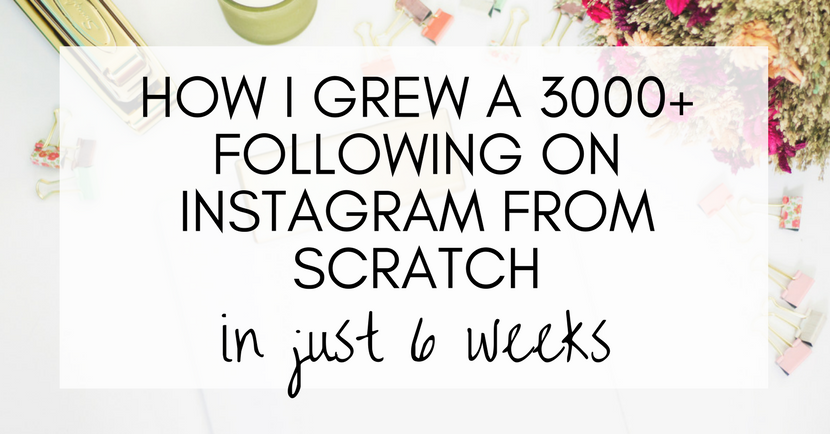

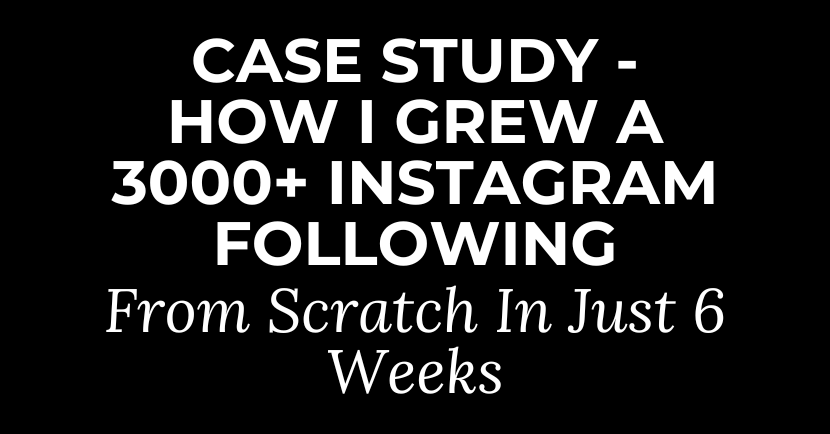
Hi Lauren,
Thanks for a superb post. Can’t believe you have shared all this information for free. I am fairly new to affiliate marketing, just getting a good Twitter following going, and about to start on Instagram. Your post fills me with confidence.
Best Wishes
Anita
Hi Lauren.
Thanks so much for the insightful guide. Up until now I’ve been focused on amassing followers on social networks, but I think your article opened my eyes and gave me quite a bit of aha moments.
The biggest aha being that I should focus on my target audience and ask myself what they want – I’ve avoided this for years, but I think you got through to me.
I’d just like to say that I love the info you’ve provided and I love your writing style <3 It feels super friendly and to-the-point.
Thanks! That’s a great comment to read 🙂
Hi Lauren,
Thanks for the inputs, its a great write and thank you for sharing the information in such detail. I am very new to this and its really helpful for beginners like me.
warm wishes
Nasreen